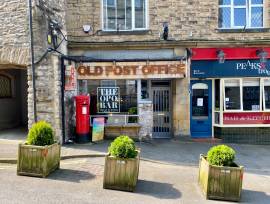Know the drill
FIRE! The very word strikes fear throughout the hospitality industry. Yet sensible precautions can minimise the threat to life and property.
Regular fire drills and sound evacuation policies can play a vital role in keeping this potential killer at bay.
Fire risk assessments will identify the level of danger and so enable premises to plan the frequency of fire drills accordingly. For example, a functions-led pub could opt for a six-monthly drill, whereas a 50-bedroom-plus hotel could probably decide on a monthly exercise.
However, even with these ballpark figures in mind, it is worth having additional fire drills whenever new staff are appointed - for they too carry a burden of responsibility for the safe evacuation of customers and guests.
A suitable person should be nominated to organise and supervise the fire drill. Generally a drill should take no longer than around 15 minutes or so to complete.
Remember, too, that it is wise to carry out fire drills when the least disruption will be caused - halfway through a wedding reception would not be ideal! Staff must be informed that a drill is imminent. Customers and guests should also be made aware if there is to be a fire drill or fire alarm test, even though many sites carry information of when fire alarm tests take place in their compendiums or notices.
The evacuation should involve ALL occupants of the building except those who may need to ensure the security of the premises.
When carrying out the drill the organiser might find it helpful to use observers to block off main routes (as if they were affected by fire) so that occupants have to use alternative escape routes.
People should be directed to the assembly point and only when a roll-call has been completed should they be allowed to return to the building. The roll call should, importantly, tally with that day's staff rotas and, in the case of a hotel, the register or print-out of guests' status.
The purpose and the objectives of any fire evacuation drill should:
• Identify any weakness in the evacuation strategy
• Test the procedure following any alteration or changes to working practices
• Familiarise new members of staff with procedures
• Test the arrangements for disabled guests
• Identify weaknesses in emergency communication procedures and systems
• Identify both positive and negative reactions of staff with designated responsibilities, such as fire wardens and fire evacuations marshals
• The responsible person and nominated observers should pay particular attention to inappropriate actions such as stopping to collect personal items during the evacuation procedure or attempting to use lifts
• Records should be kept of the
drill details and entered into the fire log book. This could lead to a review and revision of fire safety procedures.
These steps should all ensure that procedures run like clockwork in the event of a real fire emergency. And remember, there can never be too many rehearsals to save lives.














